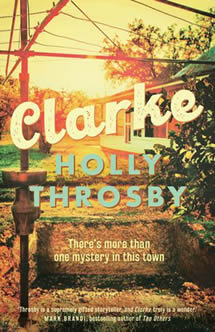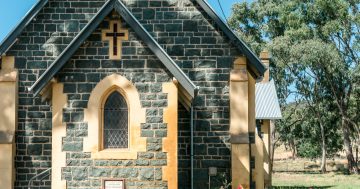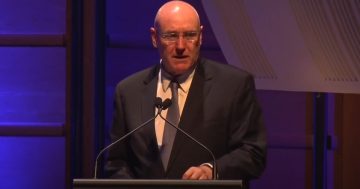Reviewed by Robert Goodman.
By Holly Throsby, Allen and Unwin, $32.99.
 Holly Throsby returns to her version of the NSW South Coast, explored previously in Goodwood and Cedar Valley in her third novel Clarke. Clarke is set in a bigger regional centre than the first two books but still has very much a small town feel. The plot is built around Throsby’s interest in the true story of Lynette Dawson (subject of the Teacher’s Pet podcasts and recent criminal trials) who went missing and whose husband was many years later found guilty of her murder but her body is still yet to be found. Like Cedar Valley, Throsby uses this true story as a catalyst to explore related issues and the lives of others around the mystery.
Holly Throsby returns to her version of the NSW South Coast, explored previously in Goodwood and Cedar Valley in her third novel Clarke. Clarke is set in a bigger regional centre than the first two books but still has very much a small town feel. The plot is built around Throsby’s interest in the true story of Lynette Dawson (subject of the Teacher’s Pet podcasts and recent criminal trials) who went missing and whose husband was many years later found guilty of her murder but her body is still yet to be found. Like Cedar Valley, Throsby uses this true story as a catalyst to explore related issues and the lives of others around the mystery.
When Clarke opens, Barney Clarke (no relation to the person whom the town was named after), is visited by the police at the house he is renting. They have a warrant to excavate the garden after new information has come to light regarding the disappearance of Ginny Lawson five years before. Ginny’s husband, who locals suspected but who was never on the radar of local police, now lives in Queensland with a new family. Next door to Barney is Leonie Wallace who has become the primary carer to four-year-old Joe, the son of her sister. The narration charts the impact of the renewed investigation on the town and particularly on the lives of Barney and Leonie who are both processing very different kinds of grief.
While this is a crime novel, the focus is very much on the lives of Leonie and Barney. Barney is separated from his wife and as a result is also estranged from his young-adult son. Leonie is dealing with life as a parent, while still also processing the death of her sister. The two will find themselves bonding over the police investigation in Barney’s backyard, but also a much closer connection than they had previously realised. In and around their stories are the lives of other townsfolk and an underlying current of things unspoken, particularly the domestic violence and control that was clearly part of Ginny’s life before she disappeared.
Despite the larger setting, Throsby is still keen to let people know that this is an Australian country town, where you have to be at least second generation to be considered a local:
‘It’s a big town that feels like a small town,’ said Rita.
‘Clarke was actually declared a city in 1979,’ said Barney, his eyes twinkling.
‘Says the man who is not even a proper local.’
‘I’ve lived here for twenty-nine years, Mrs Murrow.’
Rita grinned and said, ‘And you’ll always be a blow-in.’…
Barney smiled at his old friends. He said, ‘Just let me know if I start to look too comfortable.’
But the size of Clarke means that everybody does not know everybody else’s business as seemed to be the case in the smaller towns Throsby has explored. Meaning it is quite possible for Barney to move to another part of town and for no one there to know his story.
Throsby is making a solid writing career out of books that use crime and its impacts to open up the lives of people in regional communities. But aside from their regional setting, her characters are dealing with universal issues and Throsby takes a humanist and compassionate approach to exploring their lives. And being fictional, she can also provide some closure to some long standing mysteries, even if only in her alternative universe.
Over 850 more book reviews can be found on Pile by the Bed.











